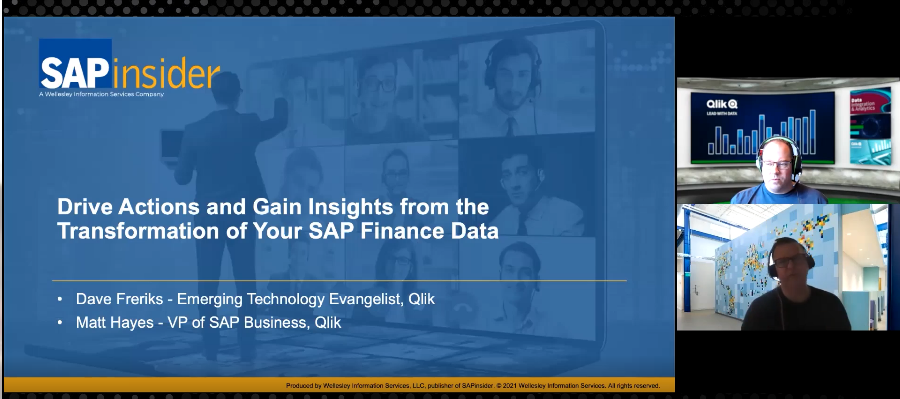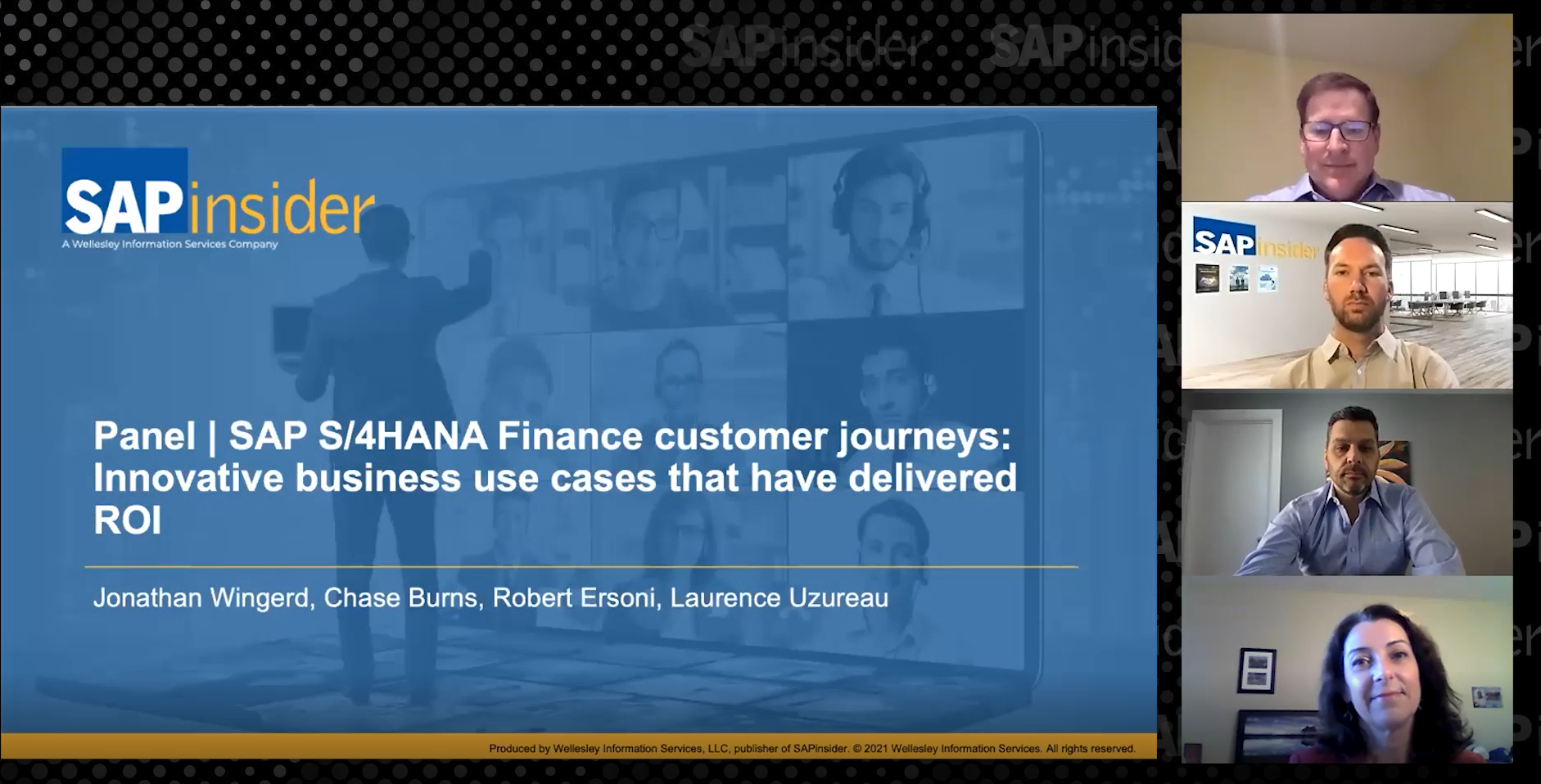The Present and Future of Financial Planning and Analysis
A recap of SAPinsider research on FP&A emphasizes connecting finance technology investments with tangible business benefits
Financial planning and analysis (FP&A) professionals benefit from understanding new practices that make their peers successful. SAPinsider’s research report on Assessing Intelligent Automation in Finance examines how leaders are choreographing their success in the dance between technology vision and business pragmatism. Combined with the FP&A elements of our Deploying SAP S/4HANA research, some interesting FP&A trends have emerged. (Spoiler alert: Microsoft Excel is not dead). Our 2020 research projects on The State of the Market for SAP Finance – a Benchmark Study and The State of the Market for SAP Financial Planning and Analysis, will bring that discussion to an even greater focus.
What we’re seeing
Studying the connections within the data, it’s easy to see the power and value of intelligent innovation. For example, even within a discipline as specific as tax administration, a senior manager of a global consumer goods company cited to us their immediate savings of 1.5 FTE’s (full time equivalents) simply by using robotic process automation (RPA) technology to expedite their US sales tax filings. It’s easy to see the parallels in how RPA and other enabling technology is being applied to accelerate a broad range of finance functions, including the distribution and compilation of internal planning worksheets within FP&A.
Of particular importance is the intersection between automation and opportunity. Technology investments best pay for themselves when there is a corresponding business need. Often, the best solution doesn’t require new investment.
Which brings us right back to Microsoft Excel, and leveraging what’s already in the toolkit…
What the SAP ecosystem is saying
Principals at insightsoftware are proud of their vision for FP&A, and how it takes its shape from the best strengths of seven component companies and technologies. When discussing SAPinsider’s FP&A research, insightsoftware’s conversation quickly broadens to the ubiquity of Microsoft Excel throughout any number of finance processes — not just FP&A. This dovetails nicely with observations shared by Jim Link at itelligence about the number of companies they continue to see that rely almost exclusively on Excel spreadsheets for their budgeting processes. Not dead indeed.
Key takeaways
The best technology investments provide enduring business value. SAP and its software partners recognize the importance of connecting vision and technology to tangible business benefits. Existing capabilities like spreadsheet integration will remain valuable components within an overall business transformation. Customers and practice leaders from consultancies like itelligence confirm that successful transformation is a deliberate process that incorporates both existing tools alongside evolving processes and technology, to address specific business needs and requirements.
The state of finance and the FP&A landscape
SAP’s portfolio of solutions has grown dramatically over recent years. This has been both organic (such as transformative changes delivered via SAP S/4HANA, SAP Leonardo, and other solutions) as well as via acquisition (such as Ariba, SuccessFactors, Concur, Fieldglass, and Qualtrics). Many areas within finance, like FP&A, provide valuable examples of how existing foundational tools (like Excel) complement central SAP capabilities and innovations (like SAP Analytics Cloud) and intersect with truly transformational innovation (such as Universal Journal and SAP S/4HANA). SAP’s software partners, like insightsoftware, are similarly both innovating and acquiring. (Insight’s list includes Bizview Systems, Jet Global, BizNet Software, and, of course, Excel4Apps, among others). Integrators like itelligence put in the hard work to maintain strong practices that embrace both existing investments in SAP and complementary solutions, as well as the compelling opportunities for future transformation and innovation using those tools.
So how can companies make coherent sense of such a rapidly changing landscape, capitalize on opportunities, and make the most of everything they already have?
Expert advice from practitioners to practitioners
Among the insights from our recent study of successful SAP S/4HANA ROI cases is an enlightening glimpse into leaders’ almost perfect zeal to look at business value ahead of all other concerns. For example, only 5% of leaders building successful ROI cases for SAP S/4HANA mentioned concern for evaluating current performance pain points, while lagging groups were 5, 6, or even 7 times more likely to organize on that basis. Companies focused simply on driving cost out of their internal finance processes are self-identifying as falling behind. Among SAP S/4HANA ROI study respondents citing difficulty in completing their ROI case, over 30% referenced a focus on the increasing costs of maintaining legacy complexity.
Both leaders and laggards rely on their existing technology, like Excel. But leaders are finding ways to make more of their new investments through judicious application of key enabling technologies like RPA capabilities that can complement their finance business goals, and not simply cut costs. The good news? Cost savings are achieved via both approaches.
What does this mean for SAPinsiders?
New finance automation technologies are showing up at a rapid pace. Not all of them pay off at the same rate, but positive ROI case studies have already shown compelling value. Here is what the survey data suggests:
- Companies that pursue finance technology innovation without a vision for achieving positive business value may find that they have acquired a hammer in search of a nail. Financial technology investments need to provide direct, measurable ROI.
- Companies that acquire enabling technology to achieve their ROI solely by saving money on their existing finance processes may be disappointed by the built-in limits to those savings. As they say, you can’t save your way to prosperity, and, even if the cost of finance is driven to zero, a dearth of positive business value will cap the benefit of that.
- Evaluation of existing technology landscapes can identify tools and approaches that can be applied to respond to needs and requirements without additional investment. Companies should always strive to understand their existing resources whenever examining opportunities for transformation and improvement.
- Companies that identify and quantify their goals in terms of positive business value (and not simply cost savings), are finding themselves ahead.
SAP provides a large part of the answer to its customers. Software partners deliver additional key components (such as cross-platform Excel integration, etc.). But it’s up to insiders to recognize and forge the intelligent intersections between the complementary pieces that will add up to more than just the sum of the parts. Expertise within the SAP ecosystem can help. Companies with clear visibility to business value — and that can apply transformative automation strategically in support of their business goals — are finding themselves ahead in profitably applying new capabilities to their existing foundation, and reaping lasting, transformative benefits.








